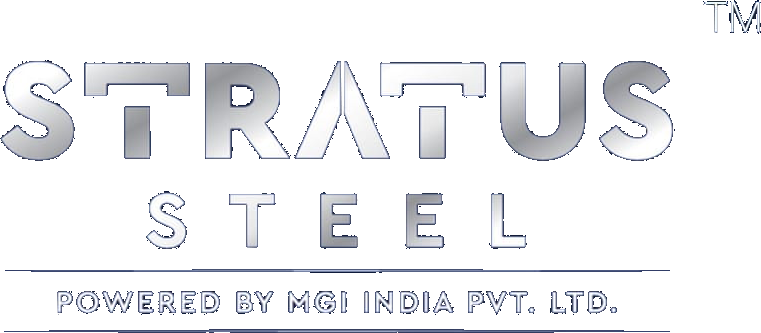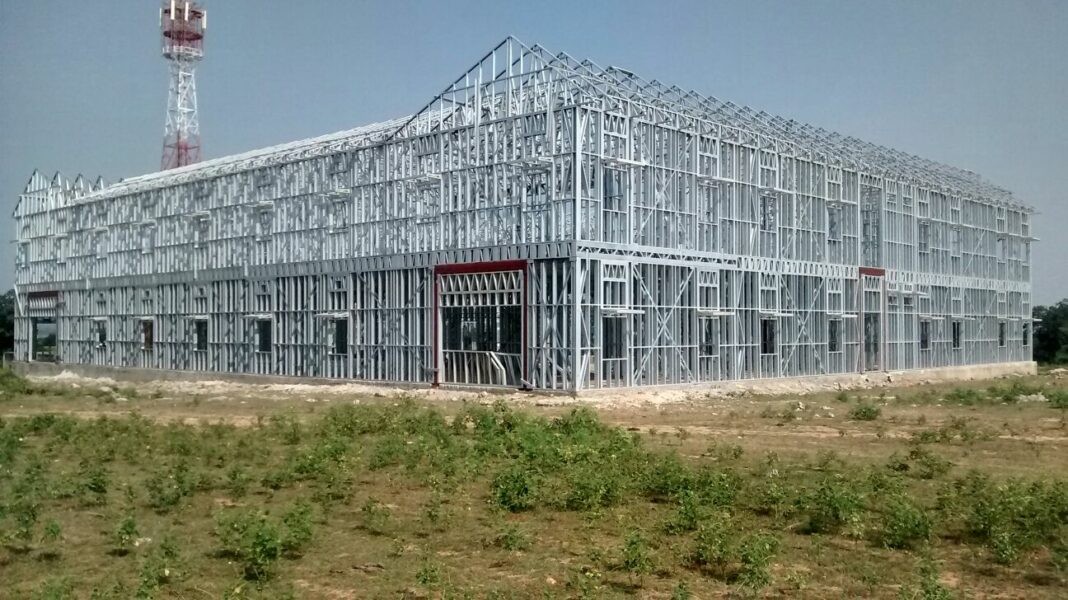Light Gauge Steel Framing Myths Debunked!
Times are changing in the Indian construction industry. Both customers and builders are looking for more efficient and faster construction materials and technology.
One such technology that is gaining acceptance is the Light Gauge Steel Frame (LGSF) construction technology. Due to its ecological and structural benefits, many builders use this technology to speed up construction time.
While Cold-formed steel – also called light-gauge steel (LGS) – is practically perfect for most construction projects, we come across many myths and misconceptions.
Hence, we decided to write this blog to bust some myths about this versatile steel construction solution and learn the truths that truly benefit developers, architects, general contractors and tenants.
Myth 1 “Your Framing Will Rust”
Light gauge steel framing is used with an additional coating of a protective zinc alloy compound. This compound adheres to the steel, keeps it from rusting and prevents corrosives from damaging it. This coating also waterproofs your building and ultimately protects it from leaks.
The coating ensures that your steel framing won’t rust, corrode, or get moldy.
Myth 2 “LGSF is very expensive”
While the up-front costs with steel framing make it seem expensive, the savings start adding up later on.
Light gauge steel has the capability of being manufactured with guaranteed precision in offsite facilities. This means the light gauge steel studs can be precut to the exact specifications inputted into your chosen roll former. This in turn means less waste thereby avoiding excess bills.
You also have the advantage of requiring fewer crew members on-site for assembly. The crew will have all the pieces cut to fit so they can work more efficiently and quickly. Labor costs can be significantly reduced which will save your total project costs overall.
Myth 3 “Lightning will strike my steel-framed house”
Many homebuilders worry about their steel-framed houses becoming a popular spot for lightning strikes to hang out during a storm. While it might make sense, it is not factually correct. You will be safer cloistered inside a steel frame house if lightning does strike.
Steel after all is a great conductor of electricity and all steel frames are grounded properly according to building codes. In case of a lightning strike, the electric charge is safely absorbed back into the ground, protecting the house.
Myth 4 “Light Gauge Steel Framing Is Noisy”
Noises in properly constructed and insulated houses come from the expansion and contraction that takes place within structural members of the house due to thermally-induced movement.
Steel however expands and contracts at a much lower rate compared to wood. Steel framing won’t shrink, settle, rot or warp either. It thereby means a reduction in plaster or cornice cracking when steel is used and no noise.
Myth 5 “Steel Framed Houses Are All the Same”
Given how easy it is to work with cold-formed steel, you can design the house of your dreams without worrying about the material getting in your way.
With the advancements, capabilities and tools offered by building design softwares like FrameCad, framing for large-scale projects and indeed homes can be customized in an unlimited number of ways. Adding things such as windows, doors, and rooms becomes a simple pre-project event defined by user-specific requirements.
Myth 6 “Expect terrible Phone and Wi-Fi Reception”
Many people buy into this myth and for good reason. Steel in general can impede signal reception, however light gauge steel framing is quite different from a sheet of steel.
Electromagnetic waves go around steel beams just like they go around wood beams. The air and space between the beams allow signal waves to get through any house or building, whether the framing is steel or wood.
The same is true in office buildings. The space between the beams is how the signal is conducted and has nothing to do with the material used.
Myth 7 “LGSF construction requires a lot of work”
It’s true that sometimes, light-gauge steel can result in more design work, but that’s only to save time and money in the long run. More time is spent on design so that every component is precisely measured and fabricated prior to the site construction happening.
Once construction begins, it is normal for the number of crew members required to be cut in half, since there is no onsite cutting of the structural elements. Only a small installation crew of eager laborers are needed.
In addition to the smaller crew, having each light-gauge steel component produced in advance ensures that there are fewer job site mistakes, delays, and confusion regarding material installation. It’s a smoother, simpler, easier and faster construction process.
Myth 8 “Light-Gauge Steel Framing is Bad for the Environment”
The future of construction – and the world we live in – relies on the wise use of our precious resources.
Steel requires energy to be produced, but it retains that energy, giving it the highest strength-to-weight ratio. Light-gauge steel doesn’t corrode, rust, decompose or harbor harmful growths.
When its use is over after an untold number of years, it is almost 100% recyclable.
As industry leaders with over 15 years of expertise, endless happy customers and 500 successful projects, we assure you that LGSF is the best technology to use when it comes to your builds.
Learn more about the LGSF technology by visiting our website – www.stratus-steel.com
Contact us for more information at work@stratus-steel.com/ 9156551673.

